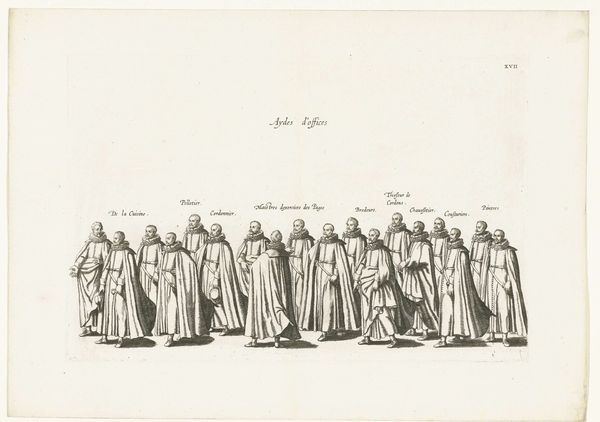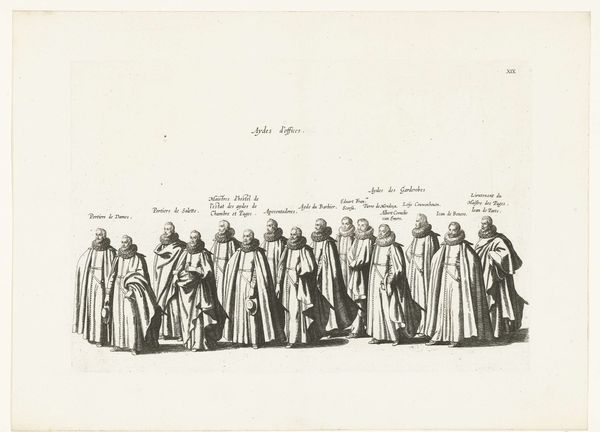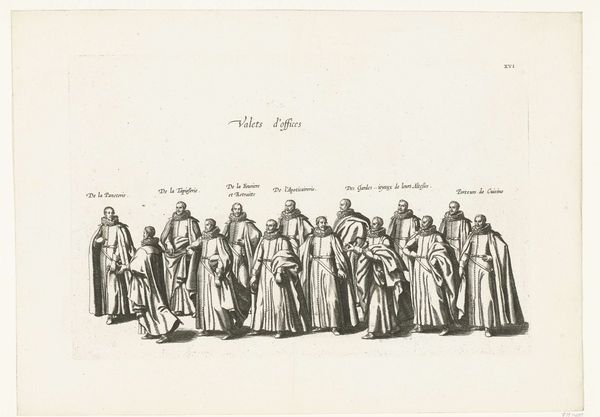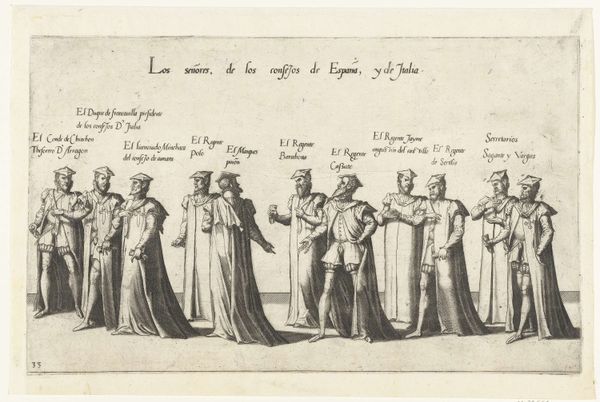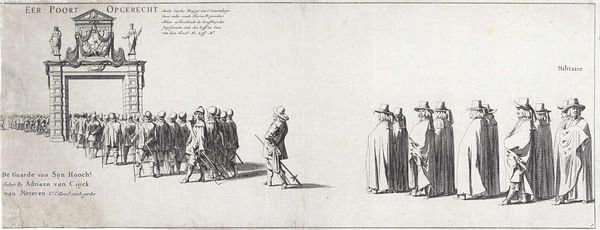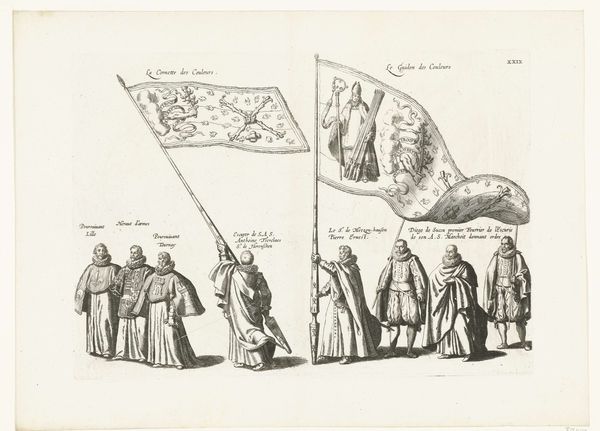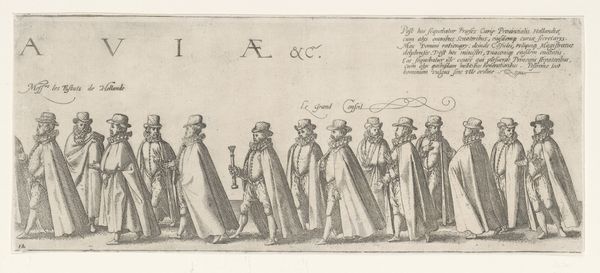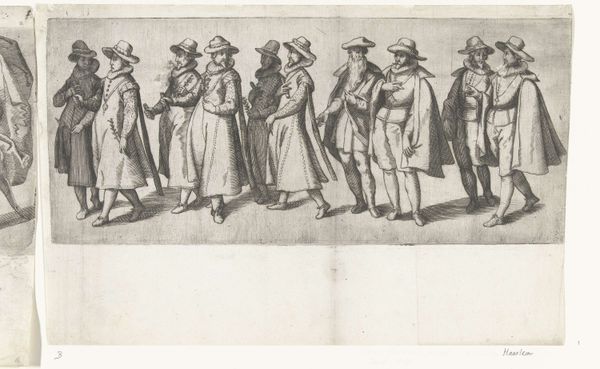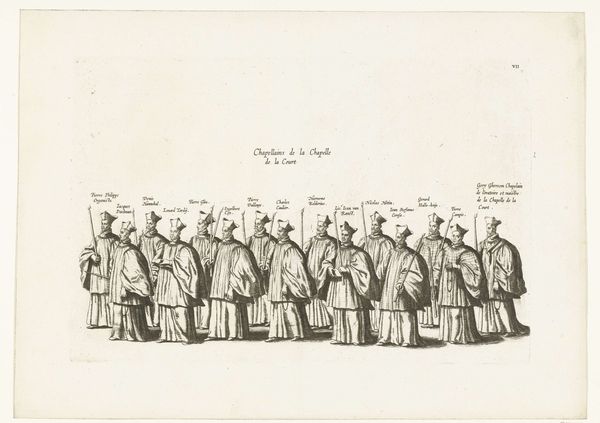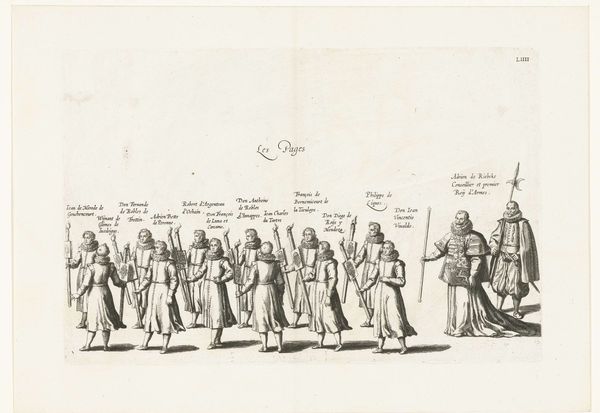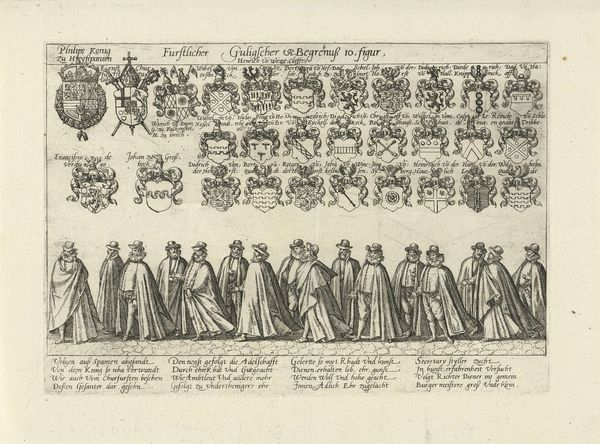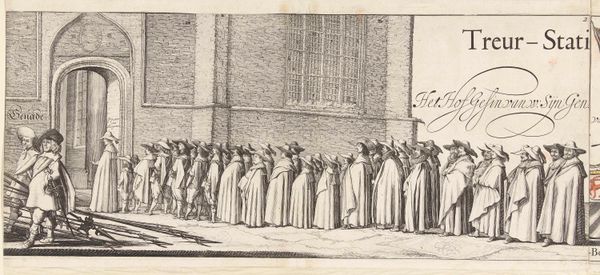
print, etching
#
portrait
#
narrative-art
#
baroque
# print
#
etching
#
figuration
Dimensions: height 160 mm, width 355 mm
Copyright: Rijks Museum: Open Domain
Editor: So, here we have “De begrafenisstoet (plaat 9)”, or “The Funeral Procession (plate 9)”, created around 1624 by an anonymous artist. It's an etching, currently held at the Rijksmuseum. The scene depicts a line of rather austere figures. It’s interesting how such a formal event is rendered so linearly and almost regimentally. How do you interpret this work in terms of its historical context? Curator: This print offers a glimpse into the societal hierarchies and performance of grief in 17th-century Netherlands. Etchings like these served not only as records of events but also as tools for social commentary. Look at how each figure is labeled—each name denoting rank, solidifying a rigid class structure even in mourning. What statements do you think this image makes about power in the Dutch Golden Age? Editor: I suppose the very act of recording and disseminating this procession underscores the importance of lineage and status. The inclusion of everyone's titles almost feels like a political act as much as a memorial. Curator: Precisely. Funerals were pivotal cultural moments, and this print normalizes power structures by displaying it for the consumption of those lower in social status. Do you consider that the starkness of the etching style influences the message? Editor: Absolutely. It lacks emotional warmth, presenting a rather cold, detached view. I wonder, would a painting of the same event convey a different message? Curator: Almost certainly. The etching medium, with its emphasis on line and detail, mirrors the societal rigidity it depicts. Considering contemporary notions of mourning and representation, how might an artist address such a theme today? Editor: I think contemporary art might challenge the hierarchical representation by focusing on those typically marginalized in historical accounts or by using media that evoke empathy. Curator: Exactly, highlighting the social inequalities this piece inadvertently immortalizes. This contrast shows us how artistic choices and social contexts intertwine to shape the stories we tell and who gets to tell them. Editor: This was a great introduction into looking at historical artworks through a modern lens, understanding art as both a reflection of and an active participant in shaping societal norms. Thank you.
Comments
No comments
Be the first to comment and join the conversation on the ultimate creative platform.
